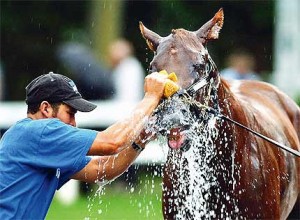 In Crile v. Commissioner, T.C. Memo. 2014-202 (2014), the Tax Court held that the taxpayer engaged in the “trade or business” of being an artist under IRC § 183 (also known as the “Hobby Loss Rule“).
In Crile v. Commissioner, T.C. Memo. 2014-202 (2014), the Tax Court held that the taxpayer engaged in the “trade or business” of being an artist under IRC § 183 (also known as the “Hobby Loss Rule“).
The taxpayer is a full-time tenured professor of studio art at Hunter College in New York City. She has worked as an artist for over 40 years, exhibited and sold her art through leading galleries, and received numerous awards for her art. She devotes approximately 30 hours per week to her art during the school year and works full-time on the business during the summers. The taxpayer had works of art displayed in several prominent museums including the Metropolitan Museum of Art, the Guggenheim Museum, and the Brooklyn Museum of Art.
The taxpayer received notices of deficiency for the tax years 2004, 2005, 2007, 2008, and 2009 based on the determination that the taxpayer’s claimed Schedule C expenses were actually unreimbursed employee business expenses that should have been reported on Schedule A, Itemized Deductions. The IRS made the determinations on the grounds that the taxpayer’s activity was not “engaged in for profit” under IRC § 183, and even if the art activities were a business, she claimed several deductions that were not “ordinary and necessary” under IRC § 162(a).
The taxpayer petitioned the Tax Court and Judge Lauber ordered the two theories be examined separately for purposes of briefing and opinion. This case considers whether the taxpayer’s activities were in the trade or business of being an artist under IRC § 183.
The IRS took the position that the taxpayer’s art (and expenses associated with producing that art) was included in the single activity of her work as an art professor within the meaning of Treas. Reg. § 1.183-1(d)(1). The taxpayer argued that the two activities were separate and should be analyzed accordingly under IRC § 183. Judge Lauber considered three factors from Treas. Reg. § 1.183-1(d)(1) including 1) the degree of organizational and economic interrelationship of her art activities, 2) the business purpose which is (or might be) served by carrying on her activities as an artist and an art professor separately; and 3) the similarity of her activities as an artist and an art professor.
Citing Treas. Reg. § 1.183(d)(1), Judge Lauber stated that “the taxpayer’s characterization will be rejected only where it ‘is artificial and cannot be reasonably supported under the facts and circumstances of the case.'” The Court noted several important facts in favor of the taxpayer’s job as a professor and activities as an artist being treated separately under IRC § 183, including her work as an artist for over 10 years prior to becoming a professor, the different job requirements of a business owner and a professor, and the hundreds of hours the taxpayer spent on the administrative requirements of her business that did not benefit her activities as a professor.
Judge Lauber mentioned several other professions (lawyers, accountants, economists) where an individual’s job requirements as a professor were different than those used in their teaching. Thus, the Court held that the taxpayers activity as an artist was separate from her activity as a professor and the Court evaluated the activity separately under IRC § 183.
Once the Court determined that the taxpayer’s activity as an artist needed to be analyzed on its own merits, the next step was for the Court to determine whether the taxpayer engaged in her art business for profit under IRC § 183. Judge Lauber addressed each of the nine factors set forth in Treas. Reg. § 1.183-2(b) to determine whether the taxpayer engaged in her art activities with the intent to make a profit.
The taxpayer kept all the receipts, invoices, and sales records for her art business dating back to 1971. Also, the taxpayer hired a bookkeeper for the tax years at issue. Additionally, the Court cited Churchman v. Commissioner, 68 T.C. 696 (1977), stating that being represented by an art gallery was “critically important in assessing profit motive, because it demonstrates that petitioner conducted her activity in the same manner as other successful artists.” The taxpayer also sent exhibition announcements to her mailing list of 3,000, attended art-related networking events, and had a website for her art. Thus, the court held that the taxpayer had a profit objective and the manner in which she conducted her art activities strongly favored the taxpayer’s argument that her art activity was a business.
Judge Lauber found that the facts were strongly in favor of the taxpayer having expertise in her field, dedicating substantial time and effort to her art business, and she had a reasonable expectation that her artwork would appreciate significantly in value over the course of her career. Additionally, the Court concluded that the taxpayer’s success as an art professor, her financial status, and her enjoyment of her art activity were of limited relevance to the IRC § 183 analysis.
The IRS’s argument focused on factors six and seven of Treas. Reg. 1.183-2(b) – history of income or losses and the amount of occasional profits. Citing Churchman, Judge Lauber noted that a history of losses is less persuasive for artists than it is for other professions. The taxpayer reported substantial losses in 18 of her last 20 years on her Federal income tax return. She had significant profits from sales of art in 1995 and 2013. In addition to Churchman, Judge Lauber cited Hughes v. Commissioner, T.C. Memo 1995-202 (holding that photographer was engaged in a trade or business despite 7 years of continuous losses), and Richards v. Commissioner, T.C. Memo. 1999-163 (holding that screenplay writer was engaged in a trade or business despite 5 straight years of substantial losses).
The taxpayer earned $667,902 from the sale of 356 works of art between 1971 and 2013. Despite the IRS’s arguments to the contrary, the Court noted that the art business was highly speculative and that a single event could lead to a substantial increase in an artist’s income.
On balance, the Court held that the taxpayer’s activity as an artist was engaged in for profit within the meaning of IRC § 183. Judge Lauber ordered that the issue of whether the taxpayer’s expenses were “ordinary and necessary” under IRC § 162(a) be decided in a separate opinion.
Read the full opinion here: Crile v. Commissioner, T.C. Memo. 2014-202 (2014)


